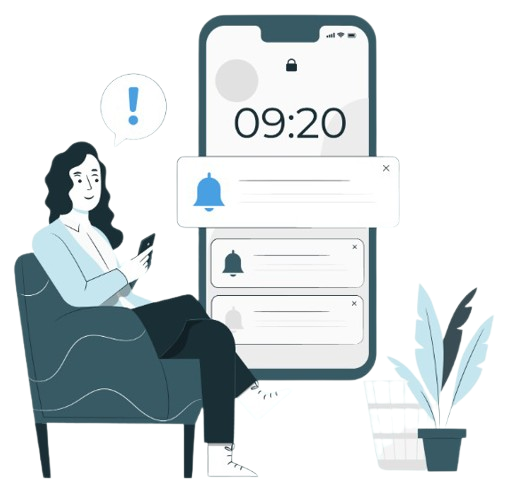Is Private Mortgage Insurance Holding You Back? A Refinance Could Be the Answer
Did you put less than 20% down on your home? If so, you’re likely paying for Private Mortgage Insurance (PMI) every month. While PMI can be a helpful tool for buying a home with a smaller down payment, it can also feel like an extra burden, eating into your monthly budget. The good news is that you don’t have to wait years for your PMI to fall off naturally. If you have enough equity, eliminating Private Mortgage Insurance through refinancing could be a game-changing financial move. In this post, we’ll explore exactly what PMI is, three ways in which refinancing can help you get rid of PMI, and the key factors to consider before you make a move.
What Is PMI and Why Do Lenders Require It?
PMI is an insurance policy that protects your lender, not you, in case you stop making your mortgage payments. You’re required to pay it if you get a conventional loan and your down payment is less than 20% of the home’s purchase price. This monthly fee can range from 0.5% to 2.5% of the original loan amount per year, which translates to hundreds of dollars a month for many homeowners.
For example, on a $300,000 home with a 10% down payment, your PMI could easily be $1,500 to $2,000 per year—that’s a significant amount of money that could be going toward savings, investments, or other financial goals.
The standard way to get rid of PMI is to wait until your loan-to-value (LTV) ratio reaches 80%, which means you have 20% equity in your home. At that point, you can request that your lender cancel the PMI. However, this can take a long time, especially in the early years of your mortgage when most of your payments go toward interest. A faster path to ditching that extra payment could be refinancing to drop PMI early.
How to Eliminate Private Mortgage Insurance (PMI) with a Refinance
Let’s start with understanding what refinancing means. Refinancing is the process of getting a new loan to pay off your old one. When you refinance, a new appraisal is typically done on your home. If your home’s value has increased, or if you’ve paid down a significant portion of your principal, you might find that you already have the 20% equity required to avoid PMI.
Here’s a simplified breakdown of how it works:
- Calculate Your Current Equity: Your home equity is the difference between your home’s current market value and the amount you still owe on your mortgage. You can get an estimate by checking a site like Zillow or Redfin for recent sales in your area, or by using a home valuation calculator. For a more accurate number, a professional appraisal is needed.
- Determine Your New Loan-to-Value (LTV) Ratio: Divide your current loan balance by your home’s appraised value. If the result is 0.80 (or 80%) or less, you’ve hit the sweet spot.
- Apply for a New Mortgage: By applying for a new mortgage that’s 80% or less of your home’s new value, you can secure a new loan without the burden of PMI.

This strategy is especially powerful in areas where home values have appreciated quickly, allowing you to build equity much faster than you would just by making monthly payments. For more details on mortgage insurance, check out our guide on what is mortgage insurance and how does it work.
Is Refinancing to Drop PMI Early the Right Move for You?
While the thought of getting rid of PMI is appealing, refinancing isn’t a one-size-fits-all solution. Here are some key questions to ask yourself:
- Do you have enough equity? As we mentioned, your LTV ratio is the most important factor. If your home’s value hasn’t increased or you haven’t paid down enough of your loan, you might not have the 20% equity needed.
- What are the current interest rates? Refinancing to a higher interest rate might not make financial sense, even if it eliminates PMI. You could end up paying more in interest over the life of the loan. It’s smart to compare current rates to your existing rate. For a deeper dive, read our article on refinancing.
- How long have you been in your home? If you plan to move soon, the closing costs of refinancing might outweigh the savings from dropping PMI. Closing costs can be 2-5% of your loan amount, so it’s a significant expense. The Federal Reserve Board offers a helpful guide on choosing a mortgage, which includes a section on refinancing.
A refinance analysis can help you determine if the savings from dropping PMI are enough to justify the costs of a new loan.
The Bottom Line: How to Refinance to Eliminate PMI
Eliminating Private Mortgage Insurance through refinancing is a powerful way to take control of your home loan, save money, and free up cash flow. By understanding your home’s current value and your equity position, you can make an informed decision that could have a huge positive impact on your financial future.
Ready to see if you can get rid of that extra monthly payment? It’s easier than ever to track your home’s equity and the latest interest rates. Sign up at InstaRefi.com to get free refinance alerts, no credit pull required. Or you can email us your scenario and we can help you find how to refinance to drop PMI. Our email is – [email protected].
You May Also Like:
- 76
 Mortgage insurance is essentially financial protection for the lender. If the borrower defaults on payments or cannot make the payments outlined in their contract with the lender, then mortgage insurance can protect them. How Does it Work? Mortgage Insurance can function differently depending on the agreement you have in place.…
Mortgage insurance is essentially financial protection for the lender. If the borrower defaults on payments or cannot make the payments outlined in their contract with the lender, then mortgage insurance can protect them. How Does it Work? Mortgage Insurance can function differently depending on the agreement you have in place.… - 74
 Mortgage Insurance, sometimes referred to as Private Mortgage Insurance, is required by lenders on conventional home loans if the borrower is financing more than 80% Loan-To-Value for his home. Private Mortgage Insurance (PMI) is insurance payable to a lender or trustee for a pool of securities that may be required…
Mortgage Insurance, sometimes referred to as Private Mortgage Insurance, is required by lenders on conventional home loans if the borrower is financing more than 80% Loan-To-Value for his home. Private Mortgage Insurance (PMI) is insurance payable to a lender or trustee for a pool of securities that may be required… - 71






